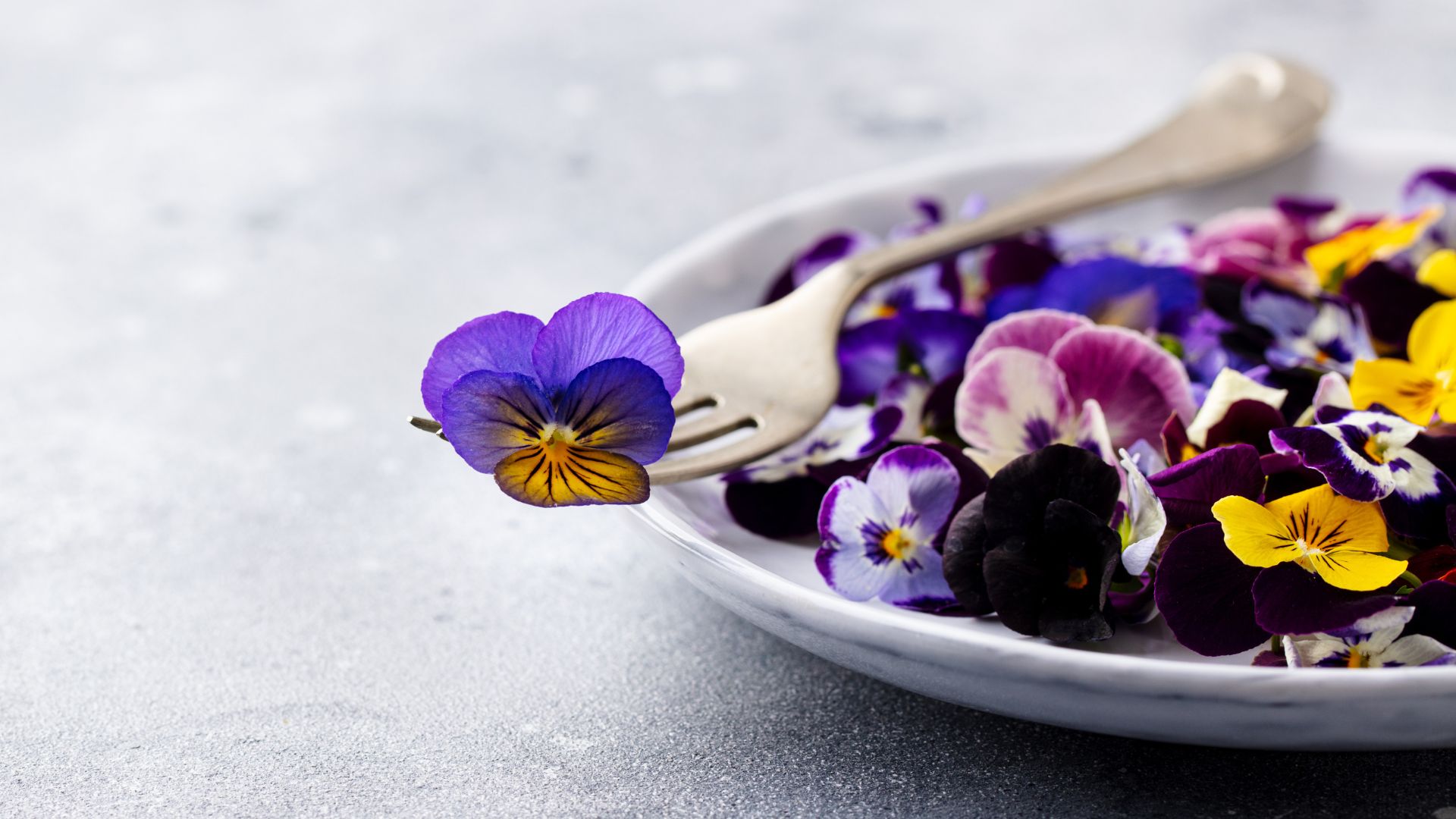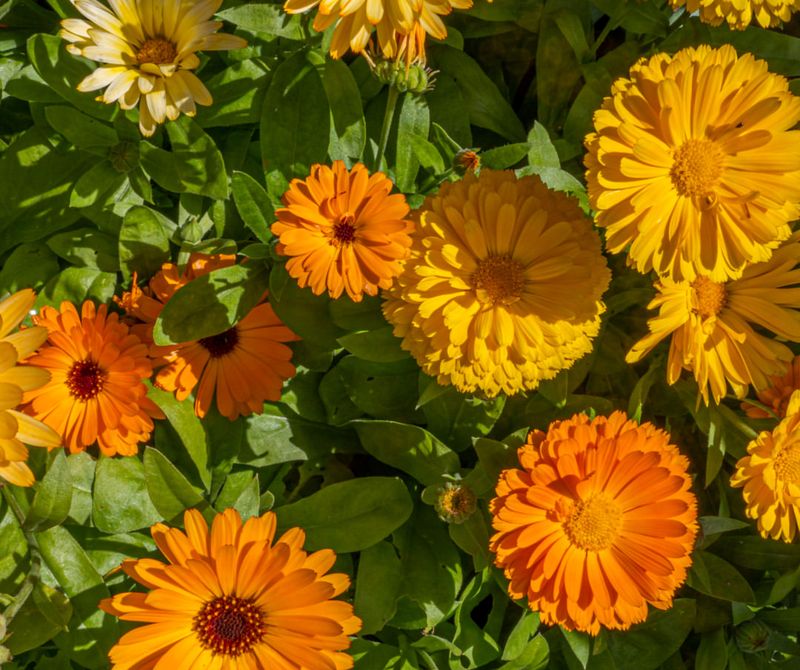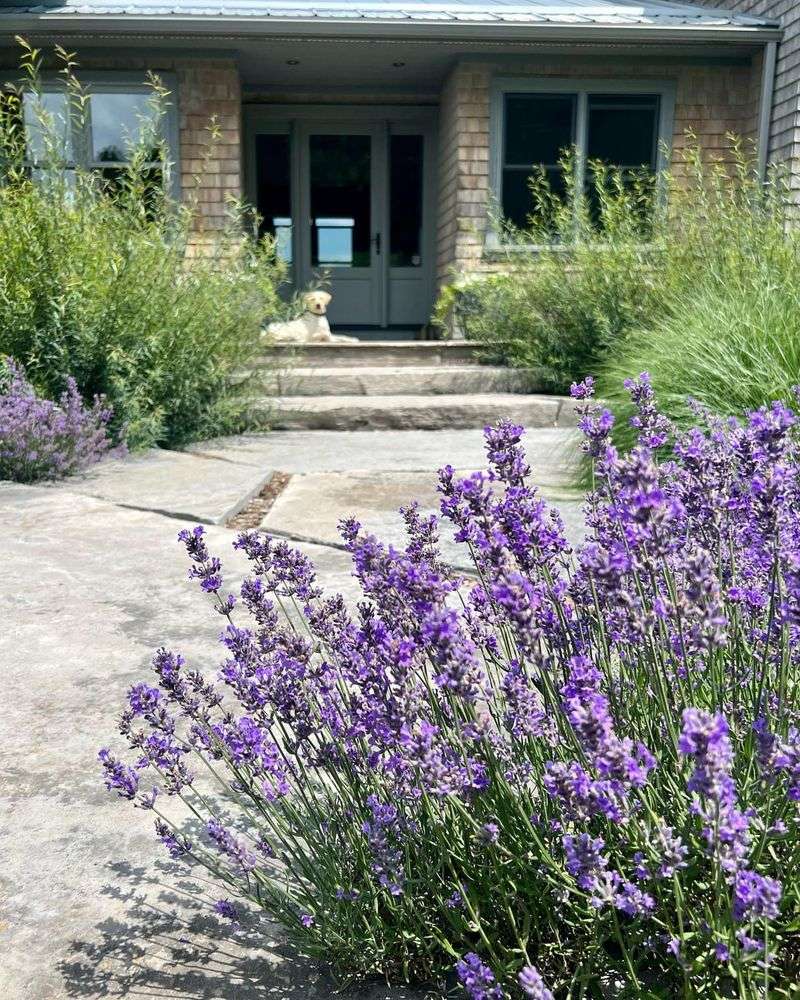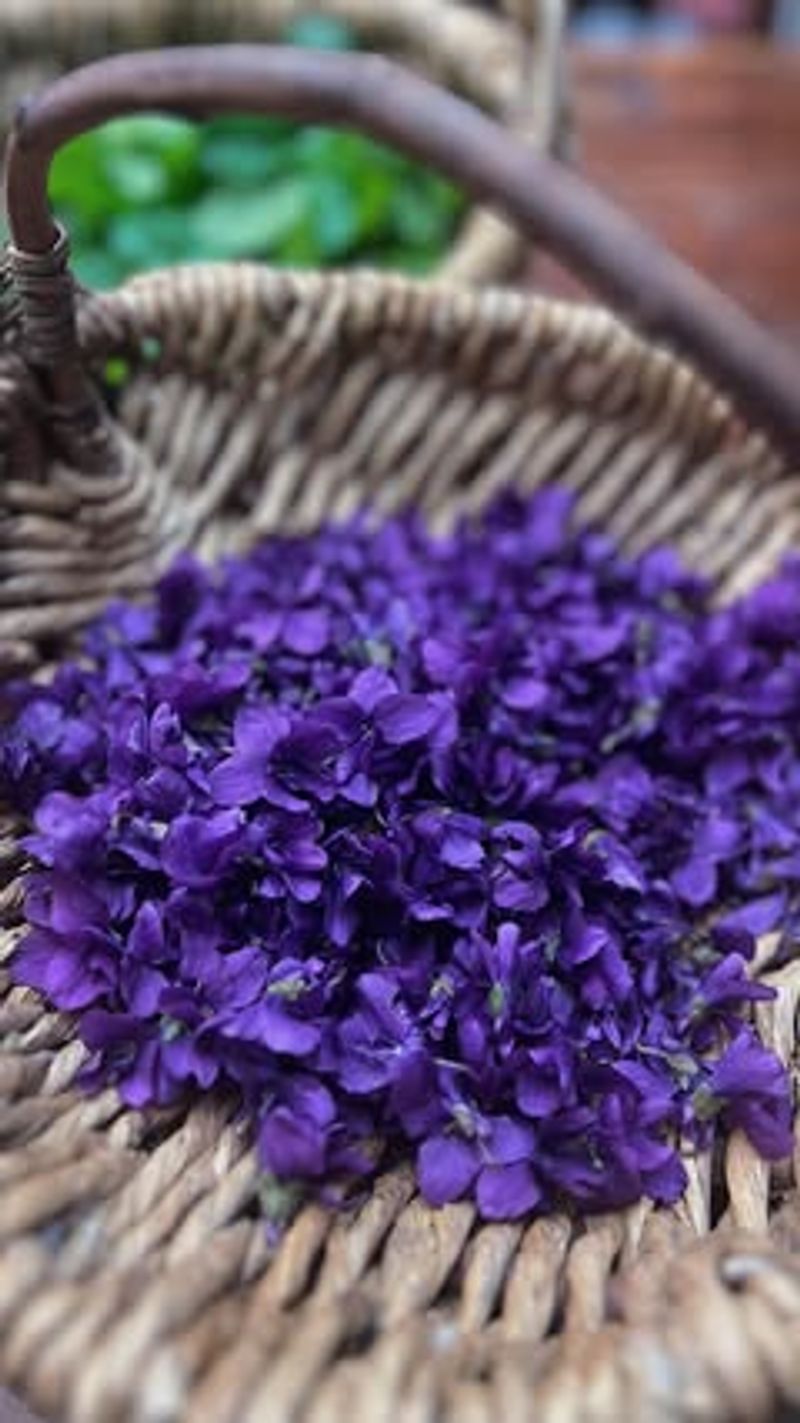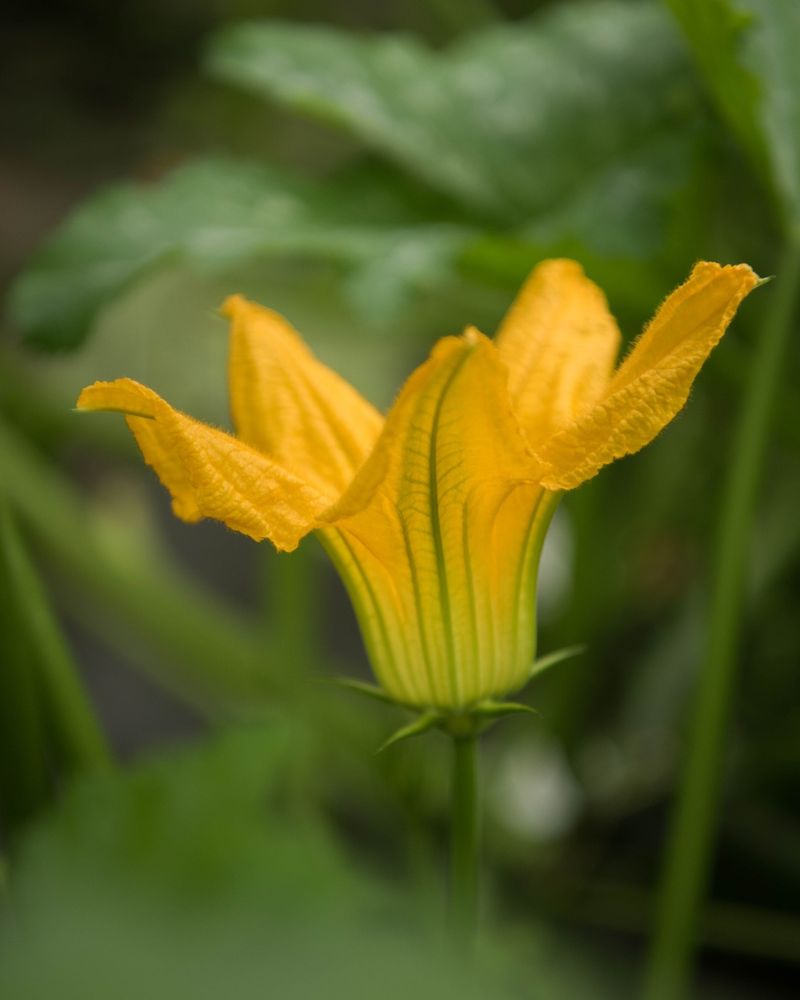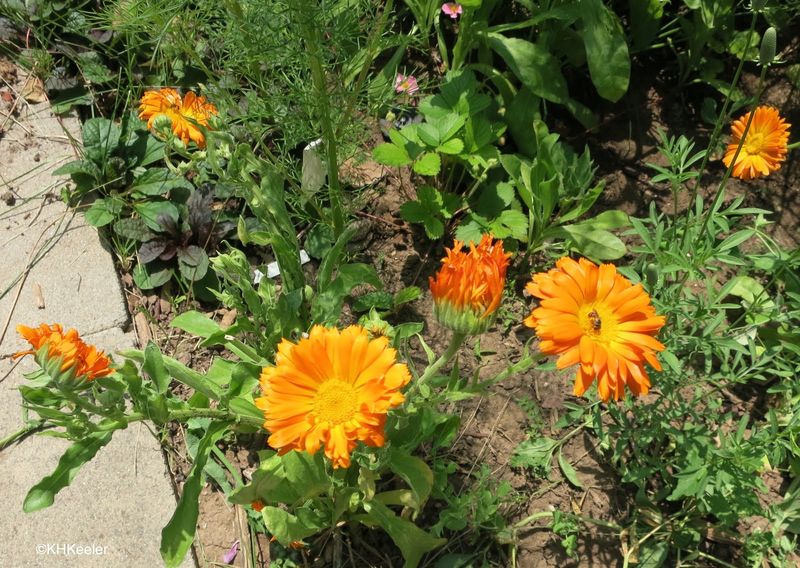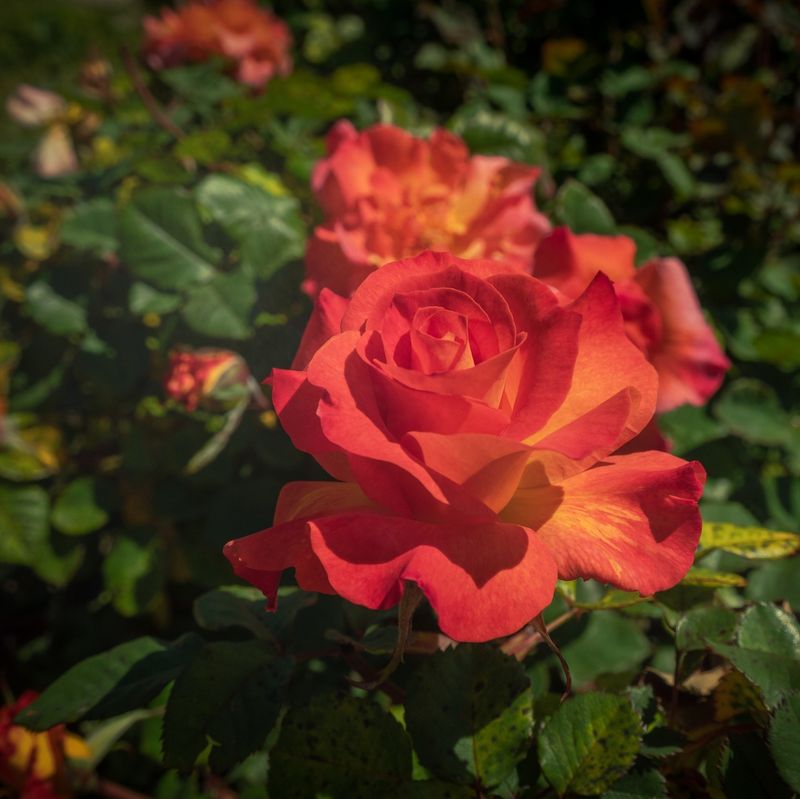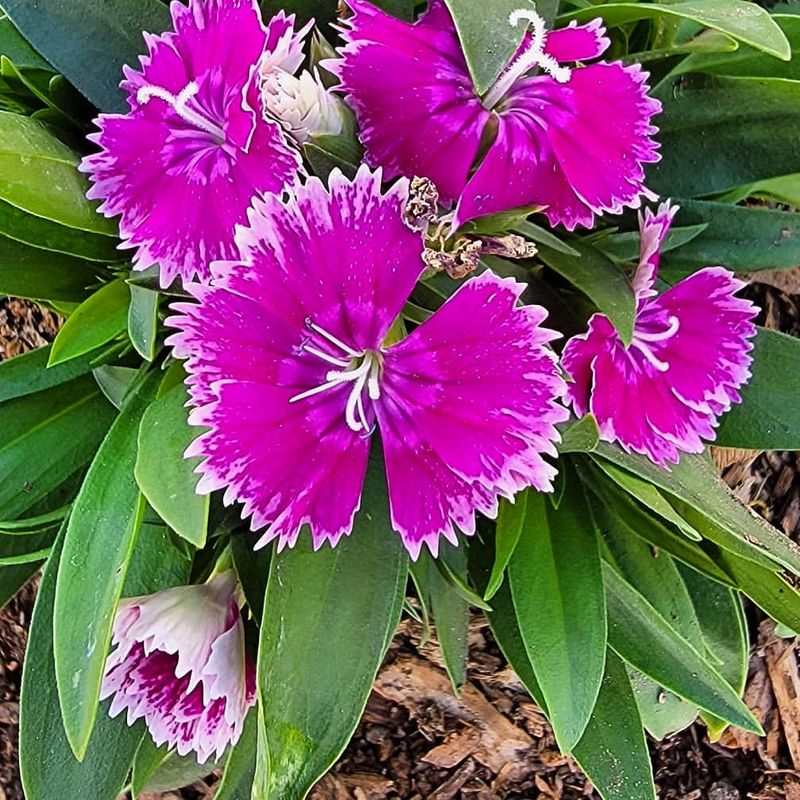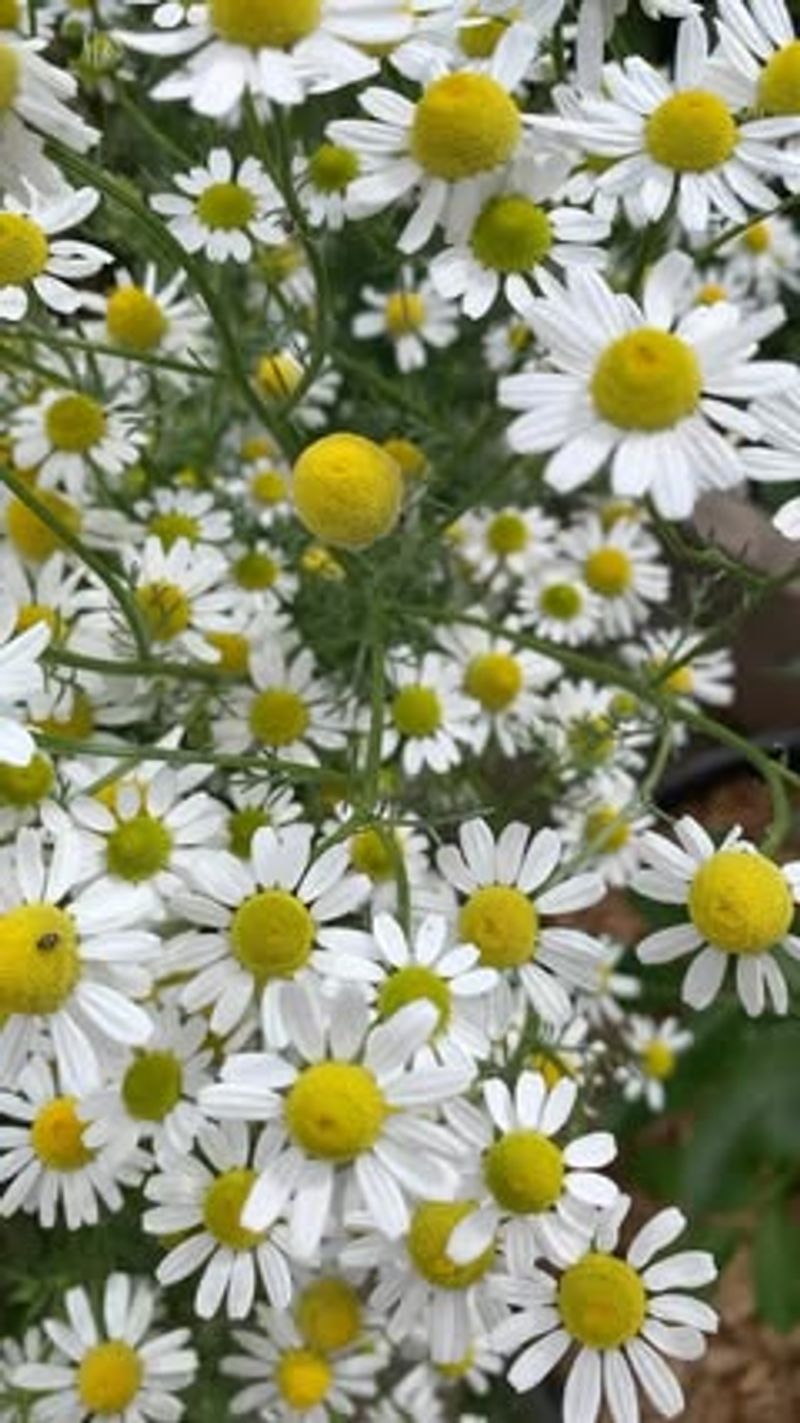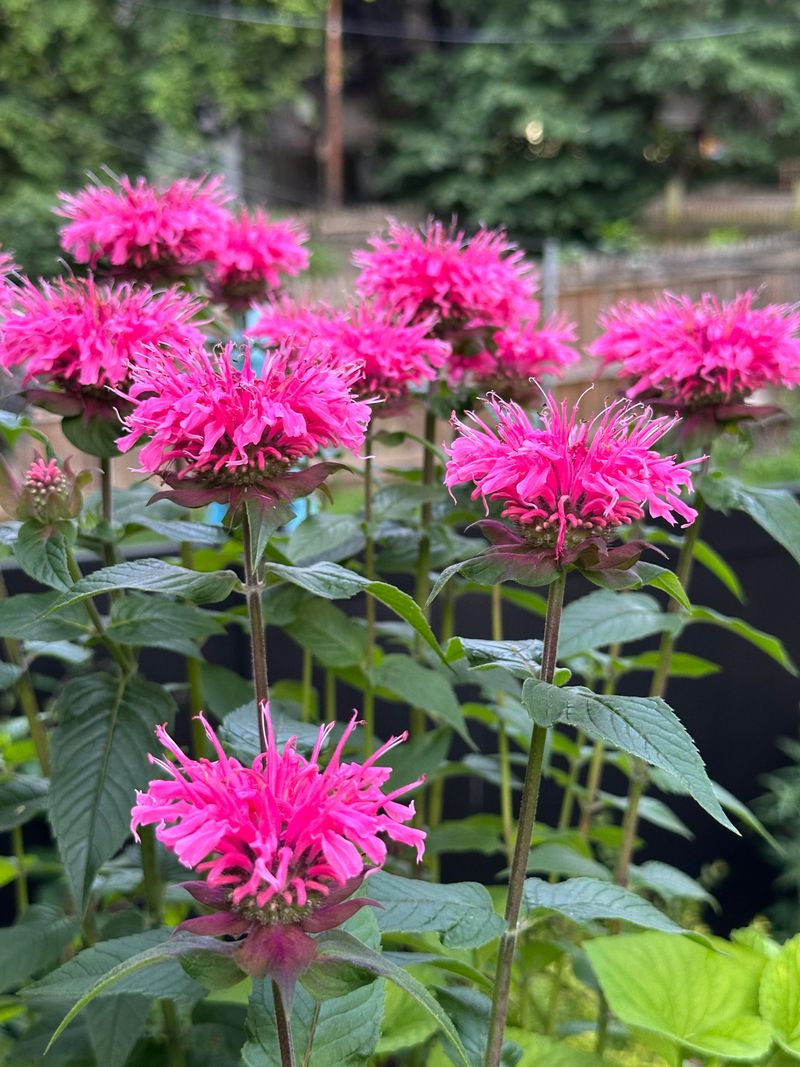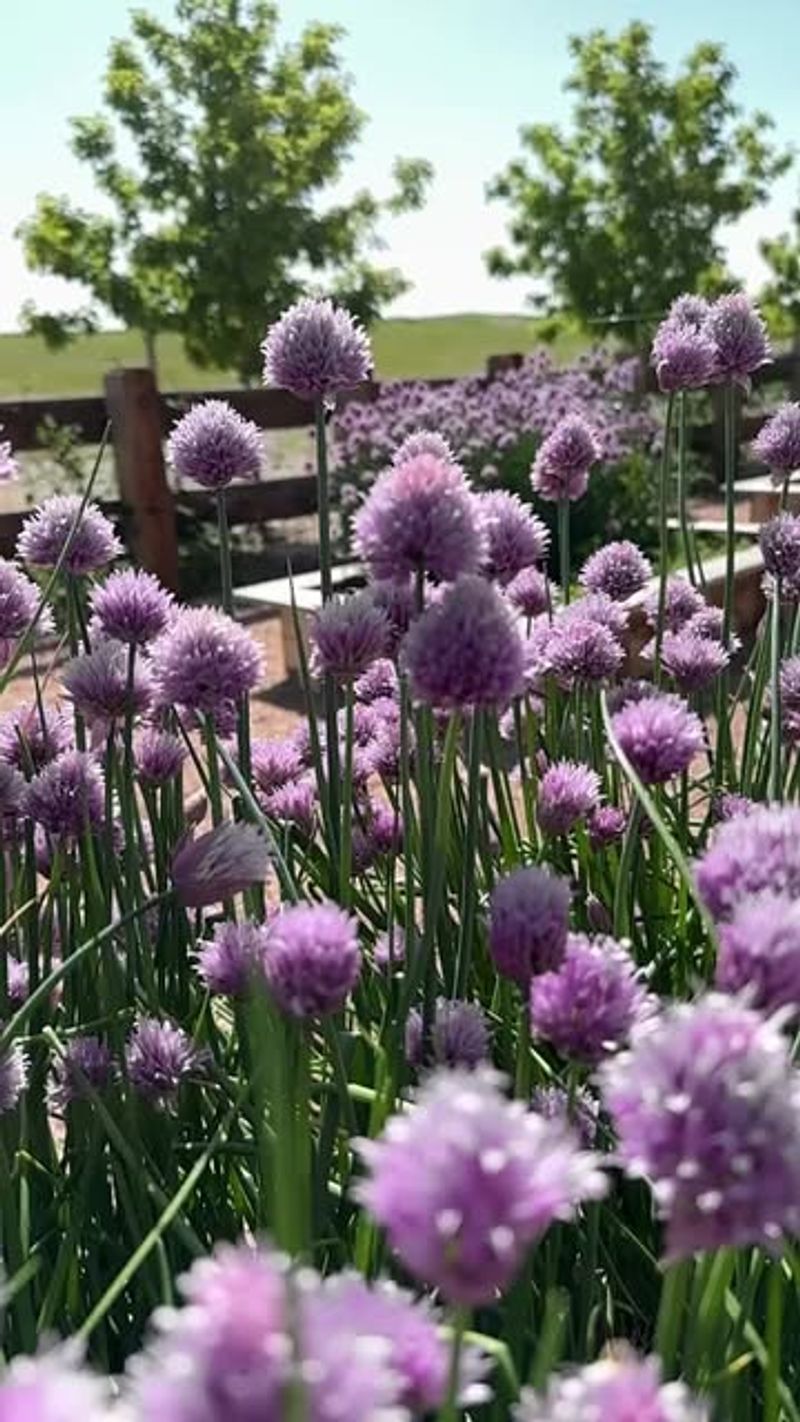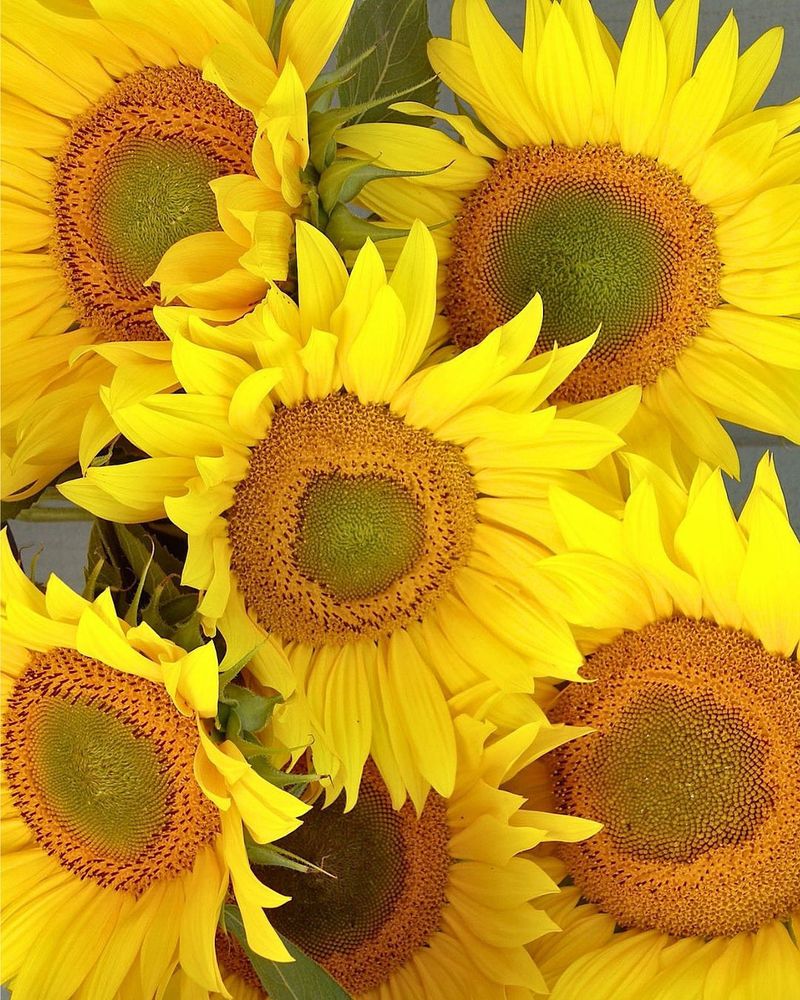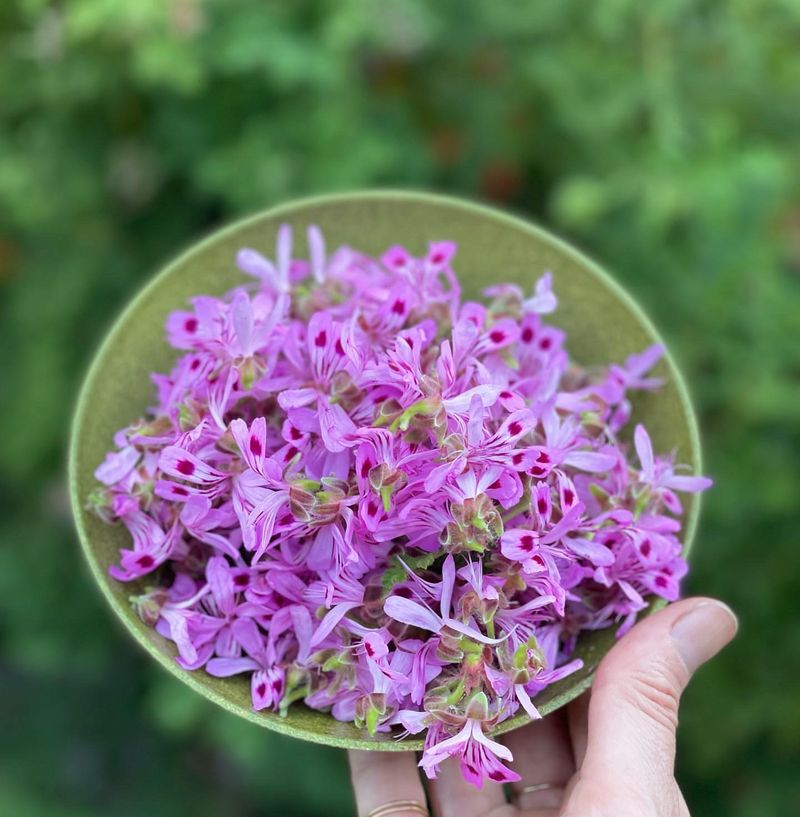Adding edible flowers to your California garden brings a mix of beauty and flavor to your outdoor space. These vibrant blooms don’t just look stunning—they can elevate everyday meals into something special. Plus, they attract pollinators that help your whole garden thrive.
Thanks to California’s diverse climate zones, there’s an edible flower for just about every region. From coastal gardens to inland valleys, many varieties flourish in our Mediterranean-like conditions.
It’s a delicious way to celebrate the seasons. Whether you’re garnishing a salad or decorating a dessert, edible flowers offer a fresh twist on homegrown goodness. They’re a feast for the eyes, the palate, and the pollinators.
1. Nasturtium
Bursting with peppery flavor similar to watercress, these vibrant orange, red, and yellow blooms are perfect for California gardens. They thrive in poor soil and actually produce more flowers with less fertilizer.
During hot Southern California summers, plant them in partial shade. In coastal regions, full sun works beautifully. The entire plant is edible – flowers, leaves, and even the seed pods which can be pickled like capers.
2. Calendula
Sometimes called ‘poor man’s saffron,’ calendula adds a golden hue to rice dishes and salads. The bright petals have a slightly tangy taste that works wonderfully in California gardens from fall through spring.
Unlike many edible flowers, calendula tolerates the cooler winters of Northern California. Plant these resilient bloomers in well-draining soil and harvest flowers in the morning when their flavor is most pronounced.
3. Borage
With star-shaped blue flowers that taste remarkably like cucumber, borage is a standout addition to summer drinks and salads. The fuzzy leaves might look intimidating, but the delicate blooms are perfect for freezing in ice cubes.
Growing borage in California is nearly effortless – it self-seeds readily and tolerates our dry conditions. Many gardeners in the Central Valley appreciate how this Mediterranean native attracts beneficial pollinators while surviving with minimal irrigation.
4. Lavender
Few plants capture California’s Mediterranean essence better than lavender. The fragrant purple flowers infuse honey, cookies, and lemonades with subtle floral notes that hint of summer.
For culinary use, English lavender varieties offer the sweetest flavor without the camphor notes of other types. Along the Central Coast, lavender thrives with minimal care, needing only well-draining soil and occasional deep watering.
5. Pansies
Mild and slightly sweet, these cheerful faces bring unexpected color to winter salads when many California gardens lack visual interest. Their delicate petals taste faintly of lettuce with hints of mint.
Fall planting works best in Southern California, allowing pansies to bloom through the mild winter months. In the Bay Area, these cool-weather lovers perform beautifully from fall through spring, offering continuous harvests when other edibles are scarce.
6. Violets
Sweet woodland violets produce delicate purple blooms that taste mildly of wintergreen. These diminutive flowers perform beautifully in Northern California’s partially shaded gardens, especially in coastal areas with natural moisture.
Beyond fresh uses, violet flowers can be crystallized with sugar for stunning cake decorations. The heart-shaped leaves are also edible, packed with vitamins A and C, making them valuable additions to spring tonics and salads.
7. Squash Blossoms
Summer squash produces abundant golden trumpets that California gardeners can harvest without sacrificing the vegetable crop. Simply pick male flowers (those with straight stems rather than tiny squash behind them) for stuffing with cheese or dipping in light batter.
In inland valleys, where summer heat intensifies, harvest these delicate blooms early in the morning before they close. Their mild, slightly sweet flavor captures the essence of summer gardens and pairs beautifully with native California herbs.
8. Marigolds
Not all marigolds are created equal – for culinary use, seek out ‘Gem’ varieties with their citrusy, slightly spicy flavor. These compact plants perform beautifully in California’s heat and actually improve garden soil by deterring certain nematodes.
Mexican cuisine has long celebrated these golden petals in dishes ranging from rice to chicken. Throughout Southern California, these drought-tolerant bloomers provide months of harvests with minimal water, making them practical choices for water-conscious gardeners.
9. Rose Petals
Heritage and old garden roses offer the most pronounced flavors, ranging from sweet to spicy depending on variety and color. The darker the petal, generally the stronger the taste – perfect for infusing into honey or sprinkling over desserts.
California’s rose-growing regions, particularly along the Central Coast, produce exceptionally fragrant blooms. For culinary use, only harvest from plants that haven’t been treated with chemicals, removing the bitter white base of each petal before adding to foods.
10. Anise Hyssop
Combining the flavors of licorice, mint, and a hint of sage, these purple spikes create a flavor explosion in summer drinks and fruit salads. Bees absolutely adore these blooms, making them valuable additions to any California pollinator garden.
Despite their lush appearance, these native perennials handle California’s summer drought conditions admirably. In the Sacramento Valley, where summer temperatures soar, anise hyssop continues flowering with minimal irrigation, providing continuous harvests from June through September.
11. Dianthus
Often called ‘pinks’ for their fringed petals (not their color), these spicy-sweet flowers add clove-like notes to desserts and fruit salads. The ‘Supra Pink’ variety performs exceptionally well in California’s Mediterranean climate.
Along the foggy Northern California coast, these sturdy perennials bloom nearly year-round. Remove the bitter white base before using the petals, which pair beautifully with strawberries – another California specialty.
12. Chamomile
The tiny daisy-like blooms of chamomile offer apple-like sweetness to teas and desserts. Beyond their culinary uses, these prolific flowers self-seed readily in California gardens, creating charming drifts of white and gold.
German chamomile performs best in the cooler coastal regions, while Roman chamomile creates a fragrant, walkable groundcover in partially shaded areas. Both varieties attract beneficial insects that help control garden pests naturally, reducing the need for interventions.
13. Bee Balm
With a flavor reminiscent of oregano and mint, these shaggy red, pink or purple blooms add unexpected zest to summer fruit cups and iced teas. Native to North America, bee balm attracts a stunning array of pollinators to California gardens.
In the cooler microclimates around San Francisco, these perennials bloom continuously through summer. Harvest the flowers just as they fully open for the best flavor, and consider planting several varieties for a succession of blooms from early summer through fall.
14. Chives
The delicate purple pom-poms that top chive plants deliver a mild onion flavor that’s gentler than the stems. Breaking apart these spherical blooms releases tiny florets that add both color and taste to California cuisine.
Throughout the milder regions of California, chives bloom repeatedly with minimal care. The flowers appear primarily in spring but may produce secondary blooms in fall, especially along the coast where temperatures remain moderate.
15. Sunflowers
Young sunflower buds can be prepared like artichokes, while the cheerful petals add nutty, slightly bitter notes to salads and garnishes. For California gardeners, smaller varieties like ‘Sunspot’ offer more manageable blooms for culinary use.
Throughout the Central Valley, where summer sunshine is abundant, these iconic flowers thrive with minimal irrigation once established. Choose pollenless varieties if you’re concerned about the yellow dust affecting the appearance of your culinary creations.
16. Society Garlic
Despite its name, these star-shaped lavender flowers taste more like sweet, mild onions than garlic. Perfectly adapted to California’s dry conditions, society garlic produces abundant blooms from spring through fall with minimal care.
In Southern California landscapes, these drought-tolerant perennials create months of edible blooms. The flowers appear on tall stems above grassy foliage, making harvesting easy without disturbing the plant’s growth.
17. Scented Geraniums
The petite flowers of scented geraniums carry the same distinctive fragrances as their leaves – rose, lemon, mint, or even chocolate, depending on variety. These Mediterranean natives are perfectly suited to California’s climate.
Along the Central Coast, where conditions mimic their native habitat, scented geraniums thrive with minimal care. Use the flowers sparingly in desserts and drinks, as their flavor can be intense – a little goes a long way in flavoring sugar, syrups, and baked goods.

